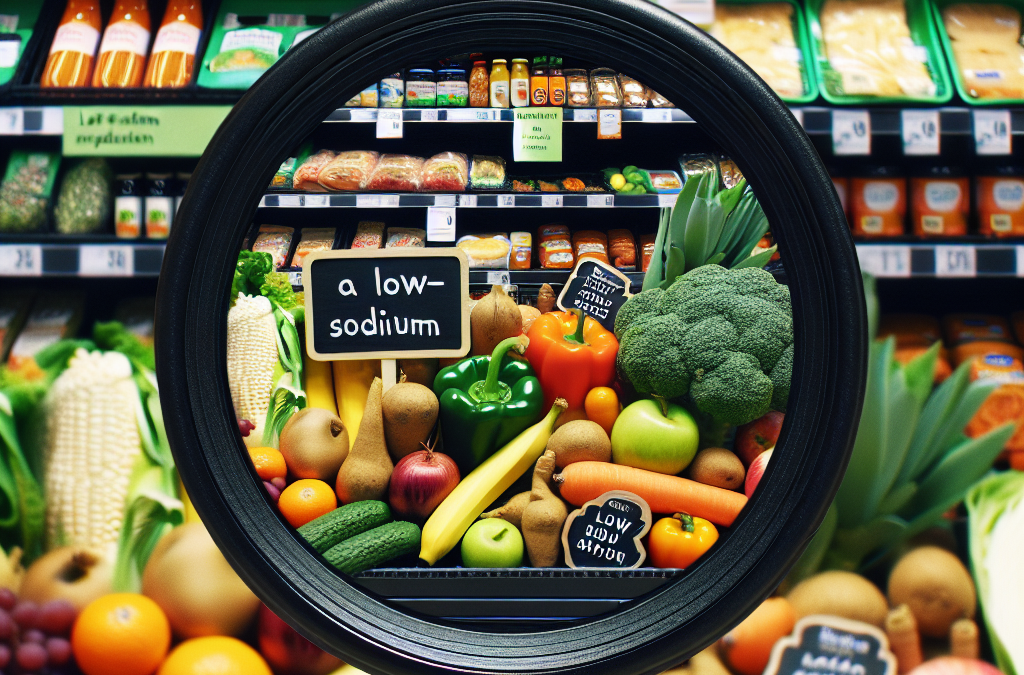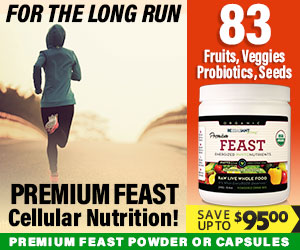Fresh Fruits and Vegetables
Discover the Benefits
Oh man, let me tell you—fresh fruits and veggies are not just the cornerstone of a healthy diet; they’re essential for a low-sodium plan. They offer a ton of nutrients while keeping sodium levels down. It’s like hitting two birds with one stone! Eating a rainbow of produce ensures you’re getting a variety of vitamins and minerals, which helps your body maintain balance.
What’s cool is that most fresh fruits and veggies are naturally low in sodium. Whether you’re munching on crunchy carrots, tossing a salad, or snacking on apple slices, you’re doing yourself a solid. Plus, the fiber in these foods promotes digestion and keeps you feeling full, which is perfect if you’re trying to manage cravings.
So, if you’re looking for low-sodium options, make fresh produce your go-to. Grab a bunch from your local market or grocery store and explore new recipes—it’s all about making it fun and flavorful!
Choosing the Right Options
When it comes to picking your produce, I always recommend going for seasonal items. They’re often fresher and more flavorful, plus they tend to be cheaper. Think about fruits like berries in the summer or squash in the fall—these seasonal picks will really bring your meals to life.
Don’t forget about variety! Different colors often signal different health benefits, so mix it up. Leafy greens like spinach and kale are awesome for salads, while vibrant reds like bell peppers can add a punch to your stir-fries. Think of your meals like an artist’s palette; the more colors, the better!
Lastly, fresh herbs can be a game-changer. Use basil, parsley, or cilantro to flavor dishes without adding any sodium. Just imagine whipping up a delicious cilantro-lime chicken without a sprinkle of salt. It’s delicious, trust me!
Cooking Methods
How you prepare your fruits and vegetables also matters. Steaming, grilling, or roasting veggies can bring out their natural sweetness without needing to add salt. My personal favorite? Roasting! It really caramelizes the sugars in veggies like carrots and Brussels sprouts.
On the flip side, I like to avoid any pre-packaged frozen or canned vegetables that are loaded with salt. Instead, go for fresh whenever you can. But hey, if you must go the frozen route, just make sure they’re plain, without those sneaky added sauces!
Always experiment with different cooking methods. Sometimes even a simple sauté with olive oil and garlic can make your vegetables pop with flavor, and it keeps you on the low-sodium track!
Whole Grains
Why Whole Grains Matter
Whole grains are like the unsung heroes of any diet, especially a low-sodium one. When I switched to whole grains, I noticed more energy and better digestion. They’re packed with fiber and nutrients that help you feel satisfied longer, keeping those pesky snack cravings at bay.
Foods like brown rice, quinoa, and whole wheat bread offer fantastic options that are naturally low in sodium. Plus, they’re versatile enough to fit into just about any meal. Want a hearty breakfast? Try oatmeal topped with fresh fruit!
What’s great about whole grains is that they can easily replace processed grains that are often higher in sodium. Making the switch not only benefits your health but also gives you that wholesome, earthy flavor we all crave.
Product Labels to Look For
When you’re shopping for grains, it’s super important to read those labels. Some products may advertise themselves as “whole grain” but still have sneaky added sodium. Ugh, so frustrating! Look for options that explicitly state “100% whole grain” and have low sodium levels.
Keep in mind that not all whole grain products are created equal. For instance, whole grain pasta is a great option because it’s filling and low in sodium, but many flavored or packaged varieties can contain high levels. Always check the back of the box!
Also, be cautious with granola options. They often sound healthy but can be a salty trap, so make a habit of scanning the ingredient list. If you see that sodium creeping up, just put it back on the shelf.
Preparation Tips
Cooking whole grains can be incredibly simple and delicious! I like to batch-cook my quinoa or brown rice, and then store it in the fridge. It makes for quick, easy meals during the week. You can toss it into salads, stir-fries, or even use it as a base for a healthy bowl.
Experiment with flavors too! Using low-sodium broth instead of water can really amp up the taste of your grains without piling on the salt. Or toss in spices like garlic powder, turmeric, or pepper to add some zing!
And if you’re short on time, there are often quick-cooking grain options. They’re not as good as the real deal, but they can work in a pinch. Just make sure they don’t skimp on nutrients.
Lean Proteins
The Importance of Lean Proteins
Incorporating lean proteins into your low-sodium diet is essential for maintaining energy and satisfaction. They’re good for muscle health and keep you feeling full for longer. Trust me, no one wants to feel hungry an hour after meals, right?
Lean meats like chicken, turkey, or fish are perfect choices. They provide quality protein without all the saturated fat. Furthermore, they generally have lower sodium levels compared to processed meats like deli meat or bacon. If you’re looking for variety, try beans, lentils, and tofu as brilliant meat-free sources!
The key with proteins is to focus on unprocessed sources. Whenever possible, buy plain versions instead of those that come pre-marinated or flavored. The last thing you want is hidden sodium ruining your meal plan!
Get an Amazing Discount on the Best Certified Organic Whole Food Supplement!
Selecting Your Proteins
Always aim for fresh meats. If you’re at the store, check to see if they’ve marked anything as “low-sodium.” Organic options may also offer reduced sodium levels, which is always a plus in my book. Keep an eye on expiration dates too—freshness is crucial!
If you’re a seafood lover like me, shrimp, salmon, and tilapia can be fantastic options. Just make sure to avoid those canned fish products that come packed in saltwater. Instead, opt for fresh or frozen, and you’ll be golden!
Don’t sleep on plant-based proteins! They’re affordable and packed with nutrients. Beans and legumes are not only low in sodium, but they also add fiber to your meals, which is a win-win.
Cooking Lean Proteins
The way you cook your proteins can make a big difference! Grilling, baking, or steaming is where it’s at. I find that grilling chicken or fish gives it a great smoky flavor without added sodium. Toss in some herbs or lemon juice, and you’ve got a flavor bomb that’s healthy too!
Marinating can enhance flavor without salt. You can use ingredients like vinegar, lemon, or low-sodium sauces. Just a little time to soak can transform your meal completely.
And especially when cooking plant-based proteins, I like to spice things up with seasoning blends instead of salt. It’s a vast world out there, and you can explore so many flavor profiles without any sodium overload!
Low-Sodium Dairy Alternatives
Understanding Dairy Choices
Dairy can throw a curveball in our low-sodium diet if we’re not careful. Milk, cheese, and yogurt can often carry hidden salts. That’s where low-sodium alternatives come in! I personally find great joy in discovering dairy substitutes that not only taste good but keep my sodium intake low.
Plant-based milks, such as almond or oat milk, are great alternatives. They usually come without any added sodium, and they can be used in anything from smoothies to baking. Just make sure to check the labels for variations, because not all nut milks are created equal.
As for cheeses, I typically lean towards low-sodium options and even explore nutritional yeast. It gives dishes a cheesy flavor without any guilt. So tasty!
Healthy Dairy Options
Going for plain, unsweetened yogurt is another fantastic choice. It’s packed with probiotics, and so versatile! You can mix it with fruits, use it in smoothies, or even as a base for dressings. Always check the labels, though—flavored varieties can sneak in added sugars and sodium.
For cheese lovers like me, look for options labeled “reduced sodium.” You can still enjoy a sprinkle of parmesan or feta on your salads or pastas without the full sodium kick. Or just get creative with cottage cheese; it’s a great source of protein!
And remember, there are so many alternatives out there. Don’t hesitate to try something new! The more varieties you try, the easier it gets to find what you love.
Cooking with Dairy Alternatives
Cooking with dairy alternatives can be super fun! You can use coconut cream to add richness to dishes without all the salt. Plus, it’s an awesome base for curries or soups.
Experimenting with different yogurt-based sauces can really elevate dishes. For example, I love mixing plain yogurt with herbs to create a fresh sauce to drizzle over grilled meats or veggies.
Lastly, I gotta say, baking with alternative milks can yield delicious results too! From pancakes to muffins, these substitutes can add a slight sweetness and creaminess without the guilt of added sodium.
Conclusion
Overall, embracing whole foods in a low-sodium diet doesn’t have to be dull. With a bit of creativity, fresh produce, healthy grains, lean proteins, and low-sodium dairy alternatives, you can enjoy a bunch of flavors in every meal. Remember, it’s all about finding foods that satisfy your palate while keeping that sodium in check!
FAQs
1. What are the best low-sodium fruits and vegetables?
Fruits like apples, berries, and oranges, and veggies like carrots, broccoli, and spinach are all fantastic low-sodium options. Fresh produce is generally the way to go!
2. Can I eat whole grain bread on a low-sodium diet?
Yes! Look for whole grain bread that is labeled “low sodium” and check the ingredient list for any hidden salts.
3. Is it okay to include beans and legumes in my diet?
Absolutely! Beans and legumes are great sources of protein and fiber, and they’re typically low in sodium, especially if you opt for dried or low-sodium canned varieties.
4. How can I flavor my food without salt?
Herbs, spices, garlic, and lemon juice are excellent ways to add flavor. Experiment with different combinations to find what you enjoy!
5. What are the best cooking methods for low-sodium meals?
Grilling, baking, steaming, and roasting are all great cooking methods that enhance flavors without adding salt.




